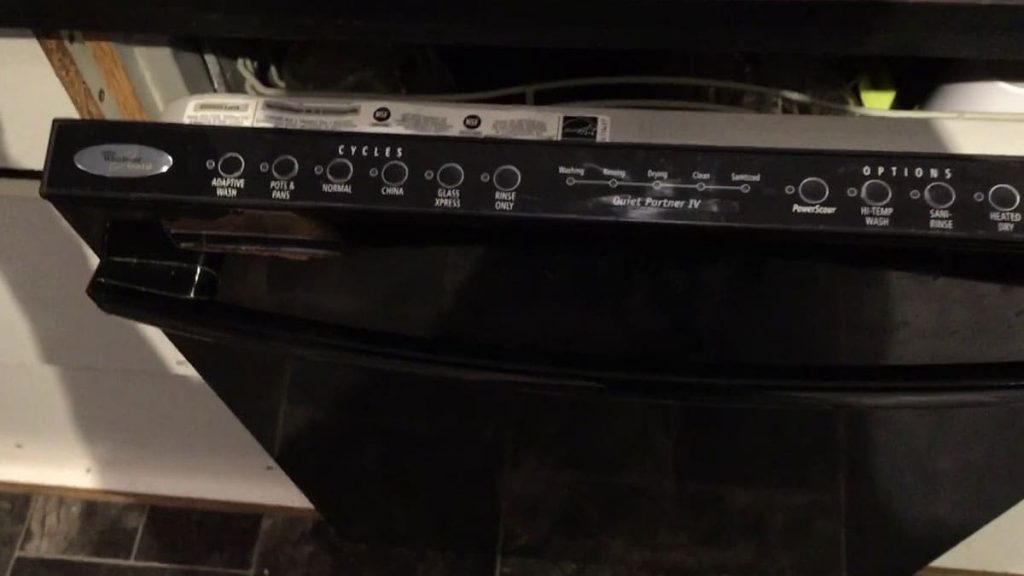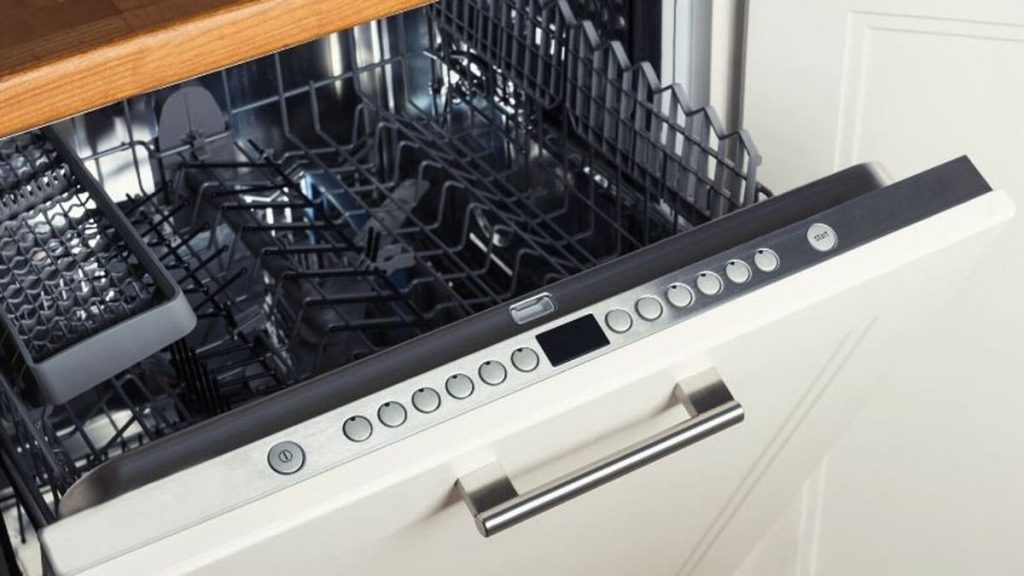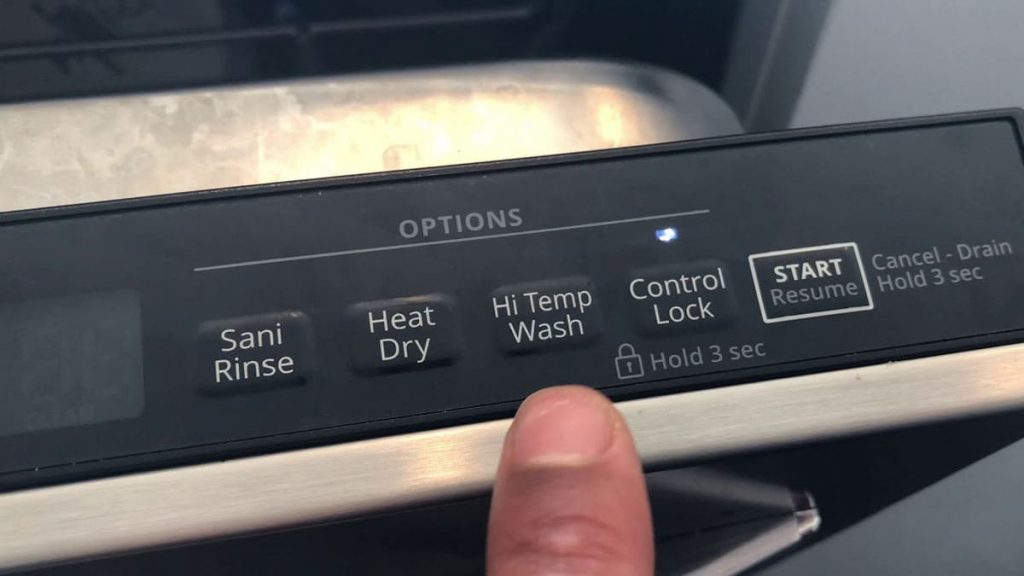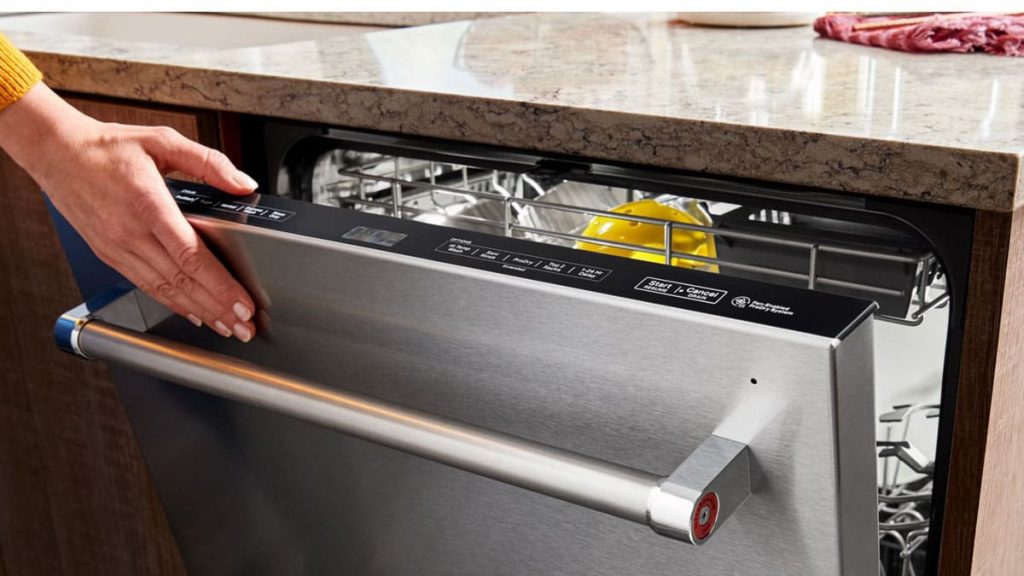Over time, any technique begins to fail, which can be caused by breakdowns or software errors. If you are the owner of a KitchenAid or Whirlpool dishwasher, then the first thing you should do if you encounter a problem in the operation of the equipment is to restart it or reset it. Our tips and tricks will help you “zero” the dishwasher. There are several ways how this can be done. We will also learn how to enter the diagnostic mode to check for software errors and possible breakdowns.
KitchenAid and Whirlpool have similar reset sequences, so this article will focus on dishwasher models from both manufacturers. This is due to the use of the same parts and controllers, so the tips will work for both KitchenAid and Whirlpool.
Reset sequence
There are several ways and algorithms to reset the settings. You can use them as you please. The easiest way is the following:
- You need to disconnect the dishwasher from the power source.
- Leave it off for 1 minute.
- Connect the machine to the mains and restart the wash cycle.
If the dishwasher is directly connected to the mains at home, then to restart, you need to turn off the machine responsible for this line and turn it on after a minute.
This method can help if the dishwasher does not work properly or an error code appears. The software failure will be fixed, and the equipment will continue to work as usual. But such manipulations can not always help, then you need to use other methods.
Dishwasher reset algorithms
If the previous simple method turned out to be ineffective, then you can try other variations of the reset sequence. In the manual for household appliances, you can find a paragraph that says “starting a service diagnostics cycle.” To enable this mode, you need to follow a certain step-by-step algorithm, or rather, press several buttons in the correct sequence. There are only two ways to reset a KitchenAid or Whirlpool dishwasher, other than simply unplugging it, which we’ll cover next.
Sequence 1-2-3
The first option with which you can reset the settings is to press the three keys on the control panel three times. To do this, you can use any buttons except power and cancel. The steps for this method are as follows:
- First you need to make sure that the appliance is in standby mode and the door is closed.
- Next, you need to press any three keys from left to right one time in turn: first the first, then the second, then the third.
- Repeat pressing in the same sequence two more times, that is, in general, the combination “1-2-3” must be pressed three times. The duration between presses should not exceed 1 second.
If you do everything right, you should be able to see the display panel turn off. The control panel will then display the word “Cleaning” or “Completed” flashing. This is a sign that the diagnostic mode has been successfully launched and the settings are being reset.
When you start the service diagnostics mode and do a factory reset, you must not disconnect the equipment from the power source. The entire cycle of self-diagnosis and cleaning must pass without interruption, otherwise a software failure may occur and you will have to call the wizard.
After that, all previous settings of the dishwasher will be reset, and the appliance will return to the default settings. The sensor calibration cycle will also automatically start, during which the dishwasher will independently diagnose and identify existing problems. The time for resetting the settings and self-diagnosis differs for different models, on average it is 20-25 minutes.
Sequence 1-2
If you tried the previous sequence, but nothing happened, the self-diagnosis did not start, then this algorithm of actions is not for your dishwasher model. So we need to act according to a slightly different plan. Try the sequence “1-2”, it looks like this step by step:
- Make sure the appliance is on standby and the door is closed.
- Press the two buttons in turn, for example, press the “High Temp Scrub” – “Air Dry” or “Sani Rinse” – “Air Dry” buttons.
- Repeat the sequence up to 10 times (for different models, the number of repeated presses is different, so it is better to press the maximum number of times) until the self-diagnosis and reset mode starts.
If this method is suitable for your dishwasher, a service diagnostic cycle will begin. This will be indicated by indicators on the control panel flashing randomly. You will also hear during the self-diagnosis how the different modes are started in turn. The dishwasher itself will test all its functions and identify any problems.
After that, the reset will begin, and the equipment will return to the default settings. In time, the whole process will not take more than 30 minutes (depending on the model). Do not unplug the dishwasher so that the service diagnostic cycle is not interrupted.
What is the self-diagnostic mode and how to enable it
Factory resets do not need to be done regularly. This is an emergency measure that allows the dishwasher to not only test all functions, but also return to the default settings. KitchenAid or Whirlpool runs a series of automatic tests during its self-diagnostic procedure, running different programs and modes. This will take from 20 to 30 minutes, it all depends on the model of household appliances.
While the machine will check and test itself, some error codes may periodically appear on the control panel. This way the technician can tell you about problems or malfunctions. The diagnostic cycle checks in turn all the functions that are in the dishwasher – from the operation of the indicators to the washing modes.
Diagnostics also allows you to check sensors and some details. For example, air vent, washing machine motor and heating element. The more functions included in the dishwasher, the longer the test will last. The loop will not end until the entire list has been tested.
- “1-2” – press two buttons in turn up to 10 times with an interval of no more than 1 second;
- “1-2-3” – alternately press three buttons, repeating the sequence up to 3 times.
The start of the diagnostic mode will be indicated by the indicators on the control panel – they will flash randomly. Skipping some “tests” is not recommended, but it is possible. For example, to disable some of the checks, you need to press the keys of the modes that, in your opinion, do not need diagnostics. At the end of the diagnostic cycle, you will see error codes if there are any malfunctions or malfunctions in the dishwasher.
How to understand error codes for Whirlpool or Kitchenaid
After the self-diagnosis cycle, it will be easy for you to understand what is wrong with the equipment, and you can take the necessary measures. Error codes are usually the same in Whirlpool and KitchenAid dishwashers. Sometimes they may differ in different models, but the decoding can be found in the instruction manual or on the Internet.
If the technician did not give any errors after testing, then there was just a software failure in the work. Resetting the settings using the methods described above will fix everything. If errors are still found, they should not be ignored.
Some malfunctions in the operation of dishwashers can be fixed independently. Sometimes it may be necessary to replace parts, check the wiring or repair some components. For those who do not understand anything in household appliances, we do not recommend that you carry out repair work yourself. Due to the wrong approach and misunderstanding of your actions, you can aggravate an insignificant breakdown, or even bring the equipment to a non-repairable state. In this case, you should trust a specialist.
Diagnostic mode and reset in some cases helps to eliminate malfunctions. You can also determine what problems there are in household appliances, thanks to special error codes.





